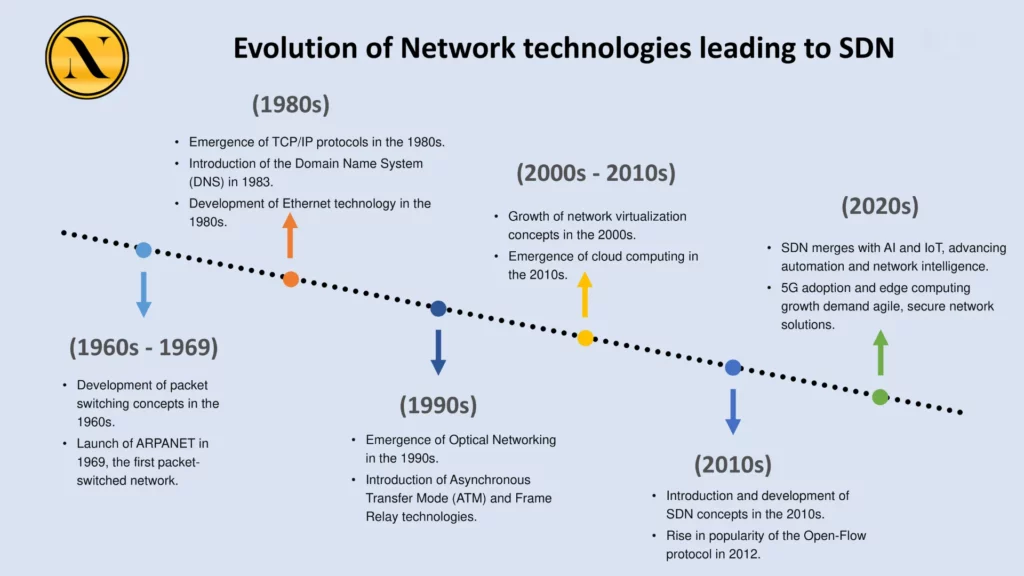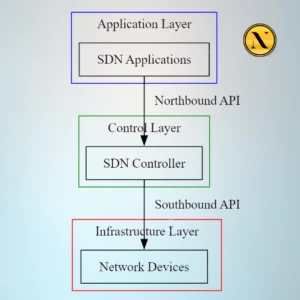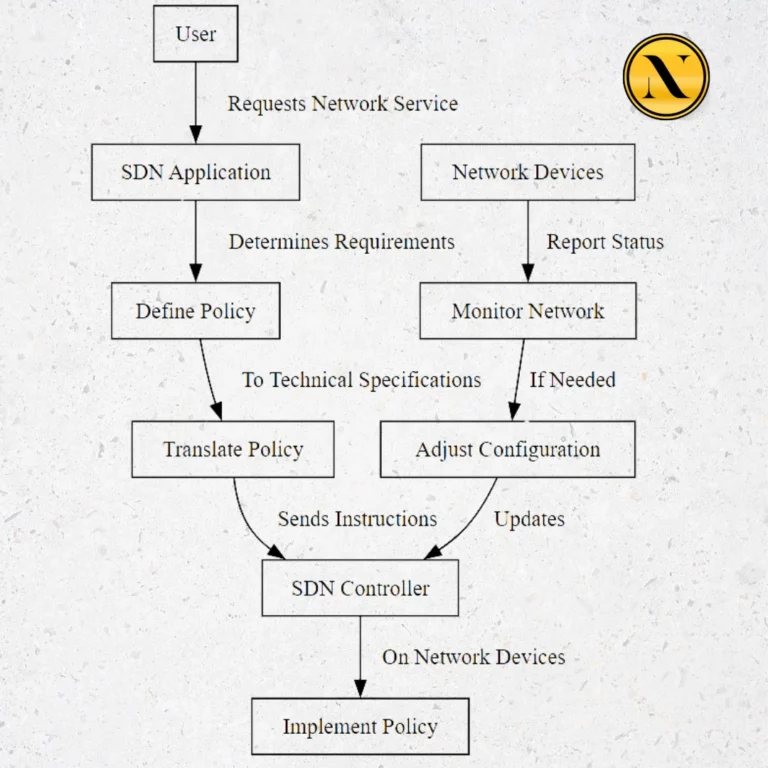Software Defined Networking (SDN) is a modern approach revolutionizing how we manage networks, addressing the limitations of traditional networking. Traditional networks, often inflexible and complex, struggle to adapt to the rapidly changing demands of today’s digital world. SDN offers a solution with its ability to separate network control from forwarding functions, enabling more agile and efficient network management.
This shift is crucial for anyone in the networking field, as it aligns with the evolving digital landscape’s needs. Understanding and mastering SDN is becoming increasingly important, making our Cisco SDN training essential. This course provides the knowledge and skills necessary to navigate and leverage the capabilities of SDN, preparing you for the future of network management.

SDN (Software Defined Networking) is a modern approach to network management that simplifies and enhances how networks are designed and operated. At its core, SDN separates the network’s control logic (the brain) from the underlying routers and switches (the muscle).
This separation allows network administrators to manage traffic from a centralized control point without physically adjusting the network hardware. This centralization leads to more efficient network management, easier traffic flow adjustments, and quicker adaptation to changing network conditions.
The Basic principles of SDN include programmability, agility, and flexibility. Programmability means network behavior can be controlled by software applications, allowing for quick adjustments. Agility refers to the network’s ability to rapidly adapt to new requirements and conditions.
Finally, flexibility in SDN allows for easier integration with new technologies and solutions. These principles make SDN a powerful tool in modern network operations, offering unprecedented control and efficiency.
Software Defined Networking (SDN) has a unique architecture that fundamentally changes how networks are managed and operated. At the heart of SDN architecture is the separation of the network’s control plane (the part that decides where the data should go) from the data plane (the part that actually forwards the data to its destination). This separation is key to SDN’s flexibility and efficiency.
The essential components of an SDN architecture include:
Software Defined Networking architecture is typically divided into three layers:

The SDN controller, acting like a network’s brain, communicates with the switches and routers (the muscle) through a protocol like OpenFlow. This communication lets the controller direct traffic efficiently across the network, making decisions based on high-level policies rather than hardware configurations.
For example, if a part of the network is congested, the controller can reroute traffic to less busy paths. This makes the network more flexible and responsive to changing demands.
A real-world example of SDN in action is in data centers. In a traditional data center, managing traffic and ensuring security can be complex and time-consuming. With SDN, the network can automatically adjust to the varying demands of different applications.
If a particular application requires more bandwidth, the SDN controller can allocate resources accordingly, improving performance and efficiency. This dynamic adjustment is crucial for data centers handling large volumes of data and numerous applications, showcasing SDN’s ability to make networks smarter and more adaptable.

SDN also offers enhanced scalability and flexibility. In today’s rapidly evolving digital landscape, networks need to adapt quickly to changing demands. SDN’s programmable nature means it can easily scale up or down based on the network’s requirements.
This adaptability is crucial for businesses experiencing growth or those needing to adjust to fluctuating traffic patterns. It ensures that the network can handle increased loads without the need for extensive hardware modifications.
Software Defined Networking is more than just a new technology; it’s a complete rethinking of how networks are designed and operated. This paradigm shift brings several transformative impacts:
As industries increasingly rely on Software Defined Networking to meet their evolving networking needs, the importance of acquiring SDN skills becomes crystal clear. To harness the full potential of SDN and contribute effectively in these industries, it is important to acquire SDN skills by Cisco SDN training.
SD-WAN (Software-Defined Wide Area Network) is a specific application of SDN technology that extends its principles to wider geographical locations. It’s particularly significant in cloud services for several reasons:
The future of Software Defined Networking (SDN) is shaping up to be both exciting and transformative, with emerging trends indicating a significant impact on the landscape of network technologies.
SDN is set to play a pivotal role in shaping future network solutions. Its flexibility and programmability are key in supporting the increasing demand for IoT (Internet of Things) devices and the burgeoning growth of edge computing. SDN’s ability to efficiently manage vast and complex networks will be crucial in an increasingly connected world.
Additionally, as 5G technology rolls out, SDN’s dynamic resource management capabilities will be instrumental in optimizing 5G networks, ensuring faster and more reliable connectivity. In essence, SDN is not just a current trend but a foundational element for the next generation of network technology.
In conclusion, Software Defined Networking (SDN) is a game-changer in the world of networking. It centralizes control, enhances efficiency, and adapts to ever-evolving digital demands. The significance of SDN lies in its ability to simplify network management, optimize resources, and foster innovation. Its applications span across various industries, making it a crucial skillset for professionals.
As you contemplate the future, SDN’s potential remains vast. It promises to further revolutionize network technologies, connect the world through IoT and 5G, and continually adapt to emerging trends. As you explore the possibilities, consider enrolling in our Cisco SDN training to equip yourself with the skills needed to navigate this exciting and dynamic field.
